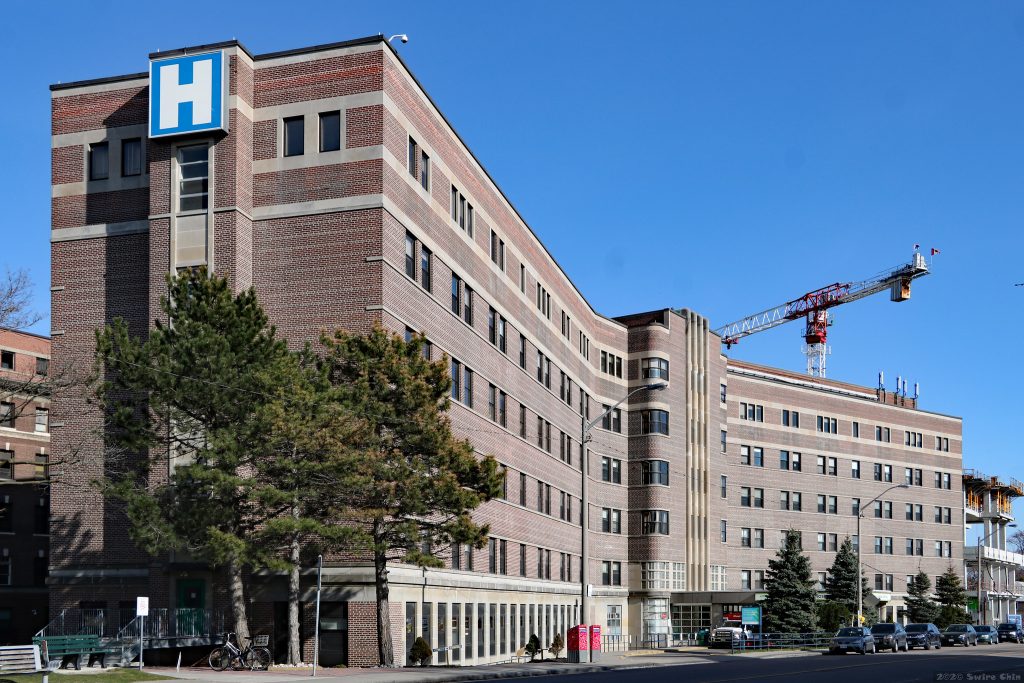Chapter 2: The Organization of Hospitals
Types of Hospitals in Ontario
Ontario has three broad types of hospitals: public, private, and specialty psychiatric. Each of these types are briefly explained below.
Public Hospitals
The vast majority of hospitals in Ontario are public hospitals. Public hospitals are independent non-profit corporations, largely funded by the government, where patients receive basic, medically necessary hospital care covered by provincial health insurance (Canadian Medical Association, 2024). Public hospitals may have extra services available, such as private rooms, which are not covered by provincial plans.
Ontario public hospitals operate within the framework provided by the Public Hospitals Act and its regulations. Within this act, hospitals are classified in the following manner:
- General (Acute Care) Hospitals
- Open 24/7 to provide the community with a variety of inpatient and outpatient services, including surgical, obstetric and emergency services. Most hospitals in Ontario fall under this classification.
- Convalescent Hospitals
- Provide recuperative care to patients who are expected to make a recovery and return to either their homes or other community placements.
- Chronic Care Hospitals
- Provide continuing care for patients with chronic illnesses or marked disability who require non-acute hospitalization.
- Active Treatment Psychiatric Hospitals
- Provide diagnosis and clinical treatment for those with a mental illness or those who require mental rehabilitation.
- Active Treatment Alcoholism and Drug Addiction Centres
- Provide inpatient and outpatient rehabilitative care for those suffering from drug or alcohol addiction.
- Regional Rehabilitation Hospitals
- Provide specialized rehabilitative care to help those recovering from a variety of serious medical concerns, including brain injuries, strokes, spinal cord injuries, and amputations (Ministry of Health, 2024; Thompson, 2018).
Ontario has 140 public hospital corporations with services located across 217 sites (Ontario Hospital Association, 2024). Several corporations, such as Grand River Hospital in Waterloo Region, operate at more than one site. Ontario’s public hospital sector is extremely diverse in size and function, with some hospitals being designated academic/teaching hospitals, pediatrics hospitals, or rural hospitals.

Private Hospitals
In 1971, Ontario’s Private Hospitals Act was amended to ban any new private hospitals, but those already in operation were grandfathered in. There are only three private, for-profit hospitals left in Ontario; the most well-known is the Shouldice Hospital, which specializes in hernia repairs (Gollom, 2022). The status of private hospitals may change as governments struggle with rising health care costs and surgical patient backlogs.
Private hospitals are facilities that are independently owned and operated on a for-profit basis. Yet, private hospitals do not necessarily need to charge patients directly for services. The provincial health insurance plan may pay private hospitals a fee to provide medically necessary services to insured residents, which may or may not cover the full costs of the services performed. Patients may be responsible for a co-payment for some services and may be offered other extended health care services not covered by health care plans, which they would have to pay for out of pocket.
Specialty Psychiatric Hospitals
Approximately one-half of all long-term psychiatric beds are found in 35 different general hospitals in Ontario. In these cases, these hospitals have an inpatient unit or floor assigned for mental health treatment as one of the many programs they run. The other half of mental health beds are found in this final category of hospital, which includes four hospitals in Ontario whose primary purpose is to provide mental health care (Ministry of Health and Long-Term Care, 2016). One of the most high-profile of these hospitals is the Centre for Addiction and Mental Health (CAMH) in Toronto, which is commonly referred to by its acronym, “cam-h”
Specialty psychiatric hospitals provide inpatient and outpatient mental health services for a variety of patients, including those who have, or are suspected of having, a mental illness and are charged with a criminal offence (Ministry of Health and Long-Term Care, 2016). These are tertiary care hospitals and patients require a referral to be admitted. Wait times for care in specialty psychiatric hospitals have increased significantly over time, with large waits now experienced for many types of care.
References
Canadian Medical Association. (2024). Understanding public and private health care.
Gollom, M. (2022, September 3). It’s a world-renowned, for-profit Ontario hospital. Could Shouldice be a model for private health care? CBC News.
Ministry of Health. (2024, January 23). Classification of hospitals. Government of Ontario.
Ministry of Health and Long-Term Care. (2016). Chapter 3: Section 3.12 specialty psychiatric hospital services. 2016 Annual Report of the Office of the Auditor General of Ontario.
Ontario Hospital Association. (2024). Ontario’s hospitals.
Thompson, V. D. (2018). Administrative and clinical procedures for the Canadian health professional (4th ed.). Pearson Canada.
Attributions
“Toronto East General Hospital” by Can Pac Swire on flickr; licensed Creative Commons – Attribution-NonCommercial 2.0 Generic.
specialist level of care, usually in a hospital setting, often over an extended period of time, such as dialysis, surgery, or psychiatric treatment

